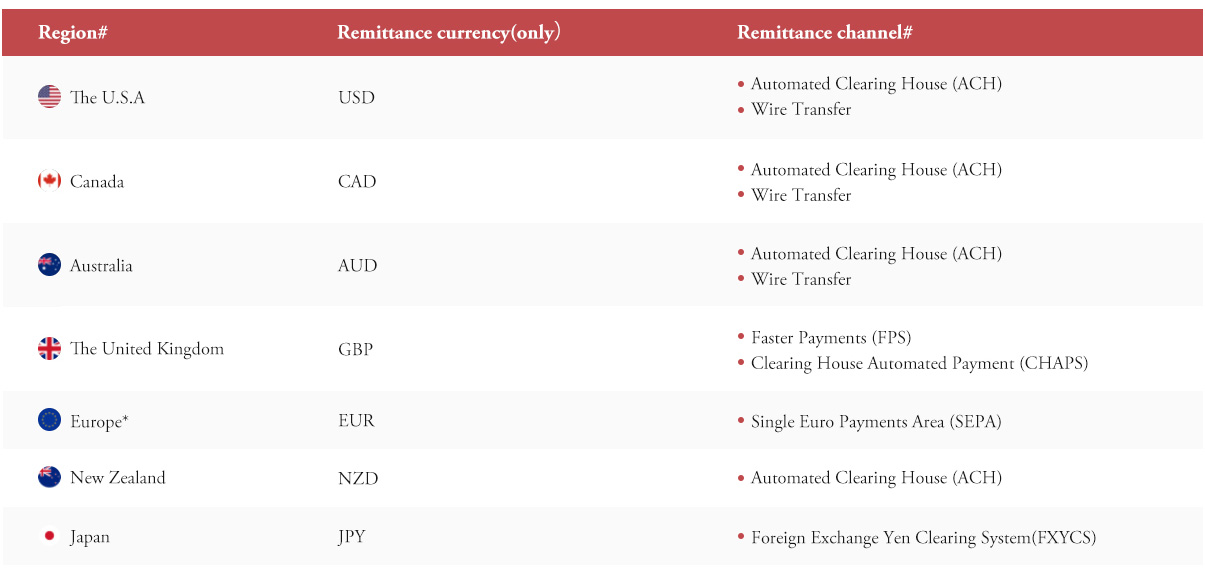We are using Domestic Wire Transfer, which is an electronic transfer of funds to a domestic receiving account using Qin Shan Tang's remittance channel partners with local currency instead of wiring funds to an overseas bank. After you confirmed your order, We will give you a quotation and provide you our bank account information.
Key benefits of Domestic Wire Transfer compared with normal International Wire Transfer

Transfer limit and channel partners

Region#
The United States of America, Canada, Australia, The United Kingdom, Europe(including: Aland Islands, Austria, Azores, Belgium, Bulgaria, Canary Islands, Croatia, Cyprus, Czech Republic, Denmark, Estonia, Finland, France, French Guiana, Germany, Gibraltar, Greece, Guadeloupe, Guernsey, Hungary, Iceland, Ireland, Italy, Jersey, Latvia, Liechtenstein, Lithuania, Luxembourg, Madeira, Malta, Martinique, Mayotte, Monaco, Netherlands, Norway, Poland, Portugal, Reunion, Romania, Saint Barthelemy, Saint Martin (French part), Saint Pierre and Miquelon, San Marino, Slovakia, Slovenia, Spain, Sweden, and Switzerland)
Remittance channel#
Please use the recommended remittance channels and currency when wiring funds.